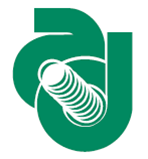Speaker
Mr
Zheng Li
(BNL)
Description
Recent Results of CERN RD39 Collaboration on Development of Radiation Hard Si Detectors Operated at Low to Cryogenic Temperatures will be presented in this talk. It has been found, in comparisons of results of simulation and charge collection data of pad and strip detectors, the CID (charge-injected-diode) operation mode of Si detectors reduces the free carrier trapping, resulting in a much higher charge collection at the SLHC fluence than that in a standard Si detector. The reduction in free carrier trapping by almost one order of magnitude is due to the fact that the CID mode pre-fills the traps, making them neutral and not active in trapping. It has been found that, electron traps can be pre-filled by injection of electrons from the n+ contact The CID mode of detector operation can be achieved by a modestly low temperature of $\approx$ -40 $^o$C and a operation bias of <600 volts. Results of one CID detector application as LHC Beam-Loss-Monitor (BLM) will be presented. Non-irradiated Si detectors has been shown, with tests by the 10 GeV/c beam from PS and by laser using our cryogenic TCT (transient-current-technique), to work quite well at LHe temperature (4 K), which are very stable with no polarization and good charge collection efficiency. Results of irradiated CID Si detectors as BLM will also be presented, and we expect that they will work just as good due to their radiation hardness.
for the collaboration
CERN RD39 Collaboration
Author
Mr
Zheng Li
(BNL)

